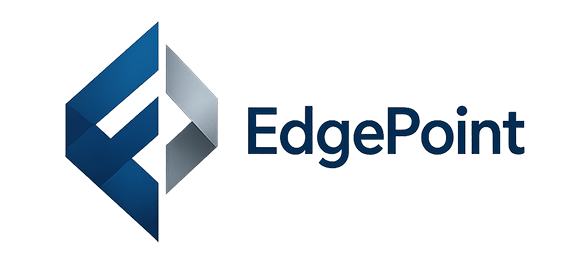Australian Small Business Tax Mastery: Navigate GST, Deductions, and Compliance Like a Pro
Australian small businesses are vital to the economy, but tax compliance is a major source of confusion. Here’s your 2025 expert guide to GST, deductions, concessions, and tax planning—with up-to-date, citable sources.
The 2025 Tax Landscape for Australian Small Businesses
· Company Tax Rate: Small businesses (turnover under $50 million) pay a reduced company tax rate of 25% for 2024–2025, unchanged from previous years[1][2].
· GST (Goods and Services Tax): Registration is mandatory for enterprises with turnover above $75,000 AUD per year. If registered, you must charge 10% GST on taxable sales, claim GST credits for business expenses, and lodge regular BAS returns[3][4][5][6].
· PAYG Withholding and BAS: PAYG withholding, reporting for superannuation, and BAS lodgement are all essential employer obligations.[4][3]
ATO Compliance Focus for 2025
The ATO highlights these compliance risk areas for small businesses in 2025:
· Failing to report all income (including by contractors)
· Errors or omissions in GST reporting, or BAS lodgement delays
· Incorrect use of new tax boosts and concessions[3][6]
Essential Deductions: What You Can Claim
Almost all expenses directly related to earning business income are deductible, including:
· Staff wages and superannuation contributions
· Office rent, electricity, water, and insurance premiums
· Marketing and advertising costs
· Professional service fees (legal, accounting, consulting)
· Business-related vehicle and travel expenses
· Software, subscriptions, and tech
· Bad debts, self-education, and business-related donations
· Home-based businesses can apportion expenses if there is a dedicated business space[4][5][7]
Tip: Claim only the business-use portion if an expense is shared for personal reasons. Meticulous receipt keeping is mandatory—ATO requires substantiation for all claims[4][5].
The $20,000 Instant Asset Write-Off (2025)
· Threshold: Up to $20,000 per eligible asset, for businesses with aggregated turnover under $10 million.
· Eligibility: Applies to new or second-hand depreciable assets first used or installed between July 1, 2023 and June 30, 2025. There’s no limit on the number of assets—per asset rule applies.
· Deadline: After June 30, 2025, the threshold falls to $1,000 unless further extended—plan purchases accordingly[8][9][10][11][12].
Superannuation Obligations: 2025 Updates
· Superannuation Guarantee Rate: Increases to 12% of ordinary time earnings from July 1, 2025[13][14].
· Deadlines: Payments must be made at least quarterly, and future changes will require payday super (with each salary payment) from July 2026.
· No Minimum Threshold: All employees are eligible for super, regardless of pay level.
· Penalties: Late or insufficient payments result in a non-deductible Superannuation Guarantee Charge (SGC)[13][14].
State Taxes to Watch
· Payroll Tax: Applies if annual wages exceed your state’s threshold (e.g., NSW $1.2M, Victoria $0.7M+), with rates around 4.85–5.45% depending on location[15].
· Stamp Duty & Land Tax: Relevant for business-owned properties or asset purchases—rules vary by state.
Key Compliance & Reporting Best Practices
· Record Keeping: Maintain records for at least five years—receipts, invoices, payroll, BAS statements, and employee details. Digital copies are accepted if securely stored[4][5][16].
· GST Reporting: The ATO may require monthly GST reporting for businesses with poor compliance to encourage timely lodgement and payment[6].
· Accounting Tools: Australian software like Xero, MYOB, and QuickBooks integrate with ATO systems and support digital compliance[4][5].
Common Tax Mistakes to Avoid
· Incorrectly claiming personal expenses as business deductions
· Missing receipts or inadequate documentation
· Not adjusting to GST or superannuation rule changes
· Late or miscalculated super contributions, especially as rates increase
Year-End Tax Strategies
· Before June 30: Finalize asset purchases under $20,000 threshold, prepay eligible deductions, and maximize super contributions[8][9][10][11].
· Annual Review: Meet with a tax professional to optimize strategy, compliance, and state-specific obligations[16].
References
1. Tax Changes for 2025 | What Small Businesses Needs To Know
2. 2025 Tax Updates - Carmody Accounting and Business Advisory
3. ATO's focus area for small businesses in 2025 | Wolters Kluwer
4. 2025 Tax Time toolkit for small business - Australian Taxation Office (PDF)
5. Top Tax Concessions & Government Boosts for 2025 | Lawpath (YouTube)
6. Australia small business tax rules explained - Stripe
7. Extension of the instant asset write off - PwC Australia
8. The cashflow-crunching payroll and tax changes that SMEs should prepare for now
9. Monthly GST reporting to be imposed on non-compliant businesses
10. Common Tax Deductions for Businesses in 2025 (EOFY 2025) | Lawpath (YouTube)
11. The End of the $20000 Instant Asset Write-Off - Adept IT Solutions
12. Better Retirement Savings in Australia: 2025 Superannuation Fund Increase
13. Payroll tax (current rates) - State Revenue Office
14. Tax Planning Strategies for Australian Small Businesses in 2025
15. New measures for small businesses | Australian Taxation Office
16. Australia: ATO guidance on eligibility of instant asset write-off
Always use this information as a guide, and consult a registered tax professional for advice tailored to your specific business circumstances.
